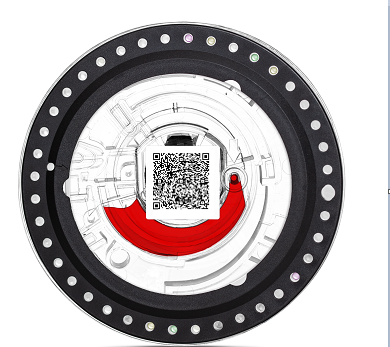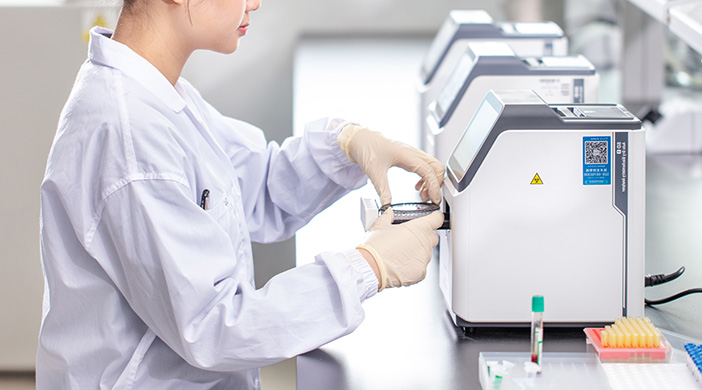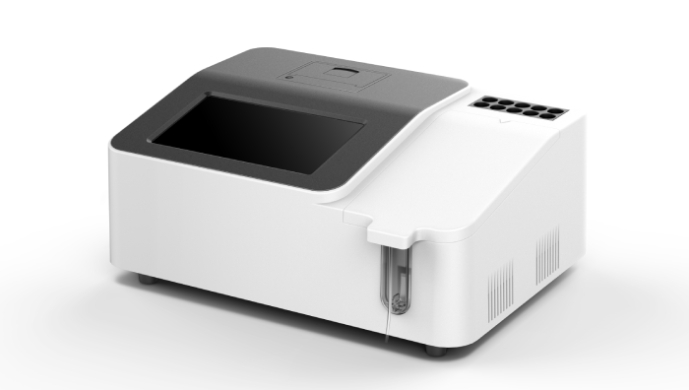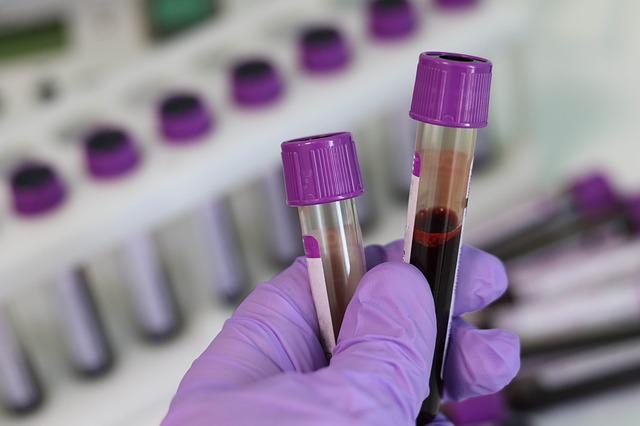Microfluidics
Since microfluidics was first proposed in the 1950s, it took 40 years for the first microfluidic products to appear. Microfluidics has gone through stages of development such as basic theory, unit operation technology development, small-scale integration and "micro+integration+automation". In 2003, Forbes magazine named this technology "one of the 15 most important inventions that will influence the future of mankind".
Microfluidic chips
Microfluidic chip, also known as Lab on a Chip. It mainly relies on the MEMS (Micro-Electro-Mechanical System) processing process, in a few square centimeters or smaller chip built on the miniaturization, integration, automation, chemistry, biology experimental platform figure, with the ability to achieve micro fluid manipulation at the micron scale level.
Through the microfluidic chip, the experimenter can complete sampling, pretreatment, reaction, separation and detection on the chip. Analysis can also be done automatically with the help of connected devices, and microfluidic chips have significant advantages such as high-throughput detection, system integration, miniaturization, automation, and portability.
Uses of microfluidics
Microfluidic technology has broad application prospects in medical testing, in vitro diagnosis, drug screening, genetic testing, biochemical analysis, forensic identification, health quarantine, and environmental monitoring of detection.
Use of microfluidics in Point-of-care Testing
Microfluidic chip has a variety of unit technology in a small controlled platform of flexible combination and scale integration features have made it the first choice for modern
Point-of-care Testing. To date, a number of successful cases of molecular and immunological diagnostics have emerged from microfluidic chip POCT.
The usefulness of microfluidics in in vitro diagnostics
In the field of
in vitro diagnostics, microfluidic chip technology has shown powerful functions for nucleic acid research and protein analysis. Microfluidic chip can transfer nucleic acid extraction, polymerase chain reaction (PCR) amplification, molecular hybridization, electrophoresis separation and detection to microfluidic chip in a single or integrated way to complete.
With the rapid development of microfluidic chip technology, its superiority as a protein research platform is becoming increasingly evident. Various unit techniques related to protein analysis, including sample pretreatment, separation and detection, have been implemented on microfluidic chips.
A. High efficiency
Compared to conventional PCR amplification, the microfluidic chip sample volume is only a few microliters. The heater is integrated directly on the chip, and the thermal cycling efficiency of the chip is 2-10 times faster for the same amplification efficiency. The use of technologies such as continuous flow PCR and thermal convection-driven PCR also allows for a faster amplification process. Available microfluidic chips are capable of reducing the diagnostic test process to as low as 10-15 minutes.
B. Low loss
Protein samples are analyzed using microfluidic analytical microarray systems. The analysis steps can all be performed on a few square centimeters of the analytical chip, effectively reducing human interference during the analysis process.
In addition, microfluidic microarray detection technology requires less reagents and reactants, which reduces the consumption of expensive reagents in experiments for the detection of some trace proteins.
The reagent tray used in the Seamaty SMT-120 biochemical analyzer uses microfluidic technology to make the sample volume small. The precise internal independent channel design in the reagent tray effectively avoids cross-contamination and ensures that the reagent reaction is not interfered by other substances.

C. High throughput detection
Microfluidic chips have many microtubules in them, allowing isolation of different reaction chambers. Different reactions in the microfluidic chip do not interfere with each other, thus having the function of multiplex detection, which can detect multiple samples at the same time, or different indicators of the same sample.
Thus, by setting up multiple reaction chambers in the microfluidic chip, up to dozens of assays can be performed simultaneously, enabling high-throughput testing.
Microfluidics in cytology applications
The study of cytology has great practical value in exploring biological processes. Since the size of microchannels in microfluidic analysis chip is very tiny, compared to the tiny size of cells, microfluidic chip is more suitable for manipulating single cells.
Rapid cellular analysis is of great importance in biology, medicine and drug screening.


